Born in the ‘black world’, and operating in complete secrecy for the first years of its life, the F-117A has been doing much the same since its supposed ‘retirement’ in 2008. The veil of secrecy surrounding its operations since then has started to slip a little, however, as Jon Lake recounts.
Developed in secret, the Lockheed F-117A Nighthawk was initially deployed under ‘Black World’ conditions, unadmitted and unacknowledged, operating by night with an elaborate cover story disguising what the US Air Force’s operating unit, then known as the 4450th Tactical Group, actually did for a living. Pilots called it simply ‘the Black Jet’, or ‘the Asset’.

The F-117A’s role was one of striking critical, heavily defended targets with precision-guided weapons, using its LO (Low Observable) characteristics to penetrate dense threat environments. Primary missions included precision attack, air interdiction, suppression/destruction of enemy air defences (SEAD/DEAD), and special operations.
The first production F-117A was delivered in 1982 and operational capability was achieved in October 1983, making the Lockheed F-117A Nighthawk the world’s first operational stealth aircraft. The existence of the type initially remained a closely guarded secret, ensuring that had it been used ‘plausible deniability’ might have been achieved. Policies changed, and the aircraft’s existence was officially revealed on November 10, 1988. This allowed pilots to begin flying the F-117A in daylight and allowed the 4450th to discard the A-7s that had been its cover story, instead using the T-38 for training and as a ‘hack’.

Retirement?
The F-117A was officially retired from USAF service on April 22, 2008, withdrawn prematurely to release funding for the F-22 programme.
The F-117 training unit (FTU) was closed in 2006 and the first six aircraft to be retired made their last flights on March 12, 2007 after a ceremony at Holloman AFB to commemorate the aircraft's career. The withdrawal from Holloman occurred in eight phases, with the operational aircraft retired to Tonopah in seven waves or groups of 4-12 aircraft, on March 13, 2007, October 12, 2007, January 25, 29 and 31, 2008, until the last two waves’ arrival at Tonopah on April 11 and April 22, 2008. Four aircraft were withdrawn from Palmdale over the same period.
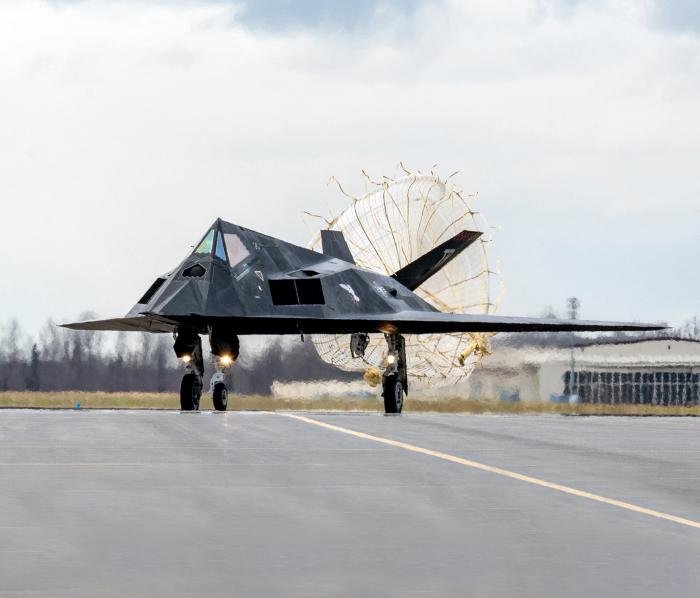
Four further aircraft (‘811’, ‘828’, ‘831’ and ‘841’) were briefly retained by the 410th Flight Test Squadron at Palmdale for flight test duties, the last of them (‘831’) being retired to Tonopah on August 11, 2008. And that should have been that.
Most of the F-117s were then placed in inviolate ‘Type 1000’ storage, maintained “in a condition that would allow recall of that aircraft to future service”. They were stored in their original climate-controlled hangars at the Tonopah Test Range Airport, with their wings removed to allow multiple aircraft to be cocooned five to a hangar at Tonopah. These hangars had been built as single-aircraft shelters.
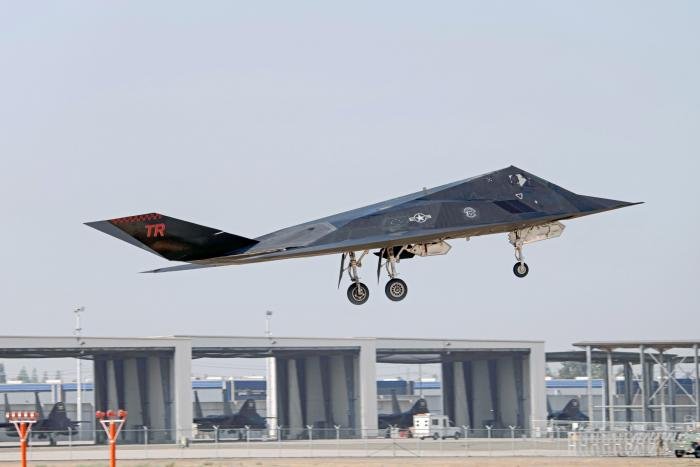
On September 11, 2017, the US Air Force announced the decision to retire the fleet permanently, and it was reported four F-117s would be removed from storage and divested every year “in accordance with the National Defense Authorization Act of 2017” – but this does not seem to have happened.
F-117s had been spotted flying periodically from 2014, perhaps merely to keep them in the condition required by the congressional mandate that demanded the possibility of a “recall of that aircraft to future service”. Press enquiries attracted the response: “The Air Force retired the F-117 from active service, but pilots from the Air Force Test Center still fly them for limited research activities.”
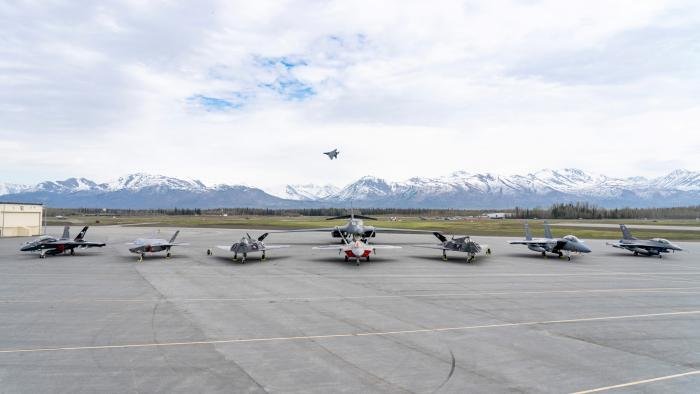
There was speculation that the F-117As were retained because they were the only stealth aircraft capable of delivering large laser-guided bombs (LGB) against moving targets. In March 2019, there were unconfirmed reports that four F-117As had been secretly deployed to the Middle East in 2016 where one had been forced to make an emergency landing at Ali Al Salem (OKAS), Kuwait, but the USAF has said that “there is currently no requirement to preserve any of these aircraft in any state for potential combat use”.
It is clear that the aircraft’s main role has been one of testing new sensors or systems – primarily by serving as Low Observable targets. The F-117A’s signature, both RF and IR, was very well understood, allowing them to act as what The War Zone’s Tyler Rogoway described as a “flying measuring stick” against which new systems could be assessed.

One F-117A was photographed refuelling from an NKC-135 on July 11, 2019, wearing an ‘aggressor type’ colour scheme, and in mid-January 2022 another was seen with its leading edges, upper fuselage and tails in a mirror-like finish, perhaps testing coatings for the Next Generation Air Dominance (NGAD) programme.
It is probable that one major task has been calibrating and improving the sensitive equipment arrays at Groom Lake, which are used for measuring the radar cross sections of aircraft under real world conditions. These are possibly (and if so confusingly) known as DYCOMS; another unrelated system known as DYCOMS is used for meteorological research!

Flying Again
In a further public acknowledgement of the F-117A’s continuing existence, Air & Space Forces Magazine – an Air and Space Forces Association publication – listed the F-117A in its 2022 Air and Space Forces Almanac, published in June 2022.
After 14 years of ‘post retirement’ activity with the F-117A, the Air Force may now be seeking to keep the type flying until at least 2034. In September 2022, the Air Force Test Center (AFTC), at Edwards Air Force Base in California, issued a request for information (RFI) to support a planned future ten-year contract for F-117A maintenance and logistics support services at the Tonopah Test Range (TTR).
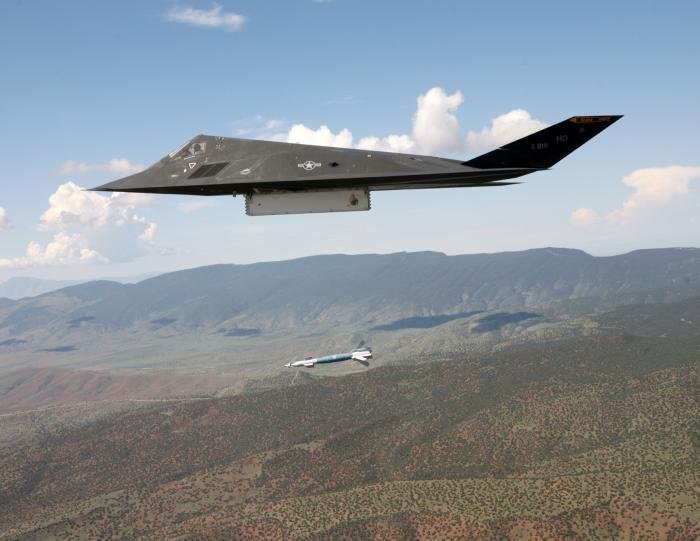
The potential contract had a prospective start date of January 1, 2024. It was expected to include “maintenance and logistics support for limited F-117A flying operations at the Tonopah Test Range (TTR) airfield, supporting “launch and recovery operations”, as well as operation and maintenance of the current F-117A mission planning system. The contract will cover “the preservation of the F-117A aircraft fleet in an extended storage condition” and the “demilitarisation/declassification of F-117A aircraft determined to be excess to Department of Defense requirements”. The RFI indicated that the expected maximum rate of divestment of F-117As would be between two and three aircraft annually.
In 2023, a USAF spokesperson said: “We have approximately 45 F-117s currently. As we demilitarise the aircraft, they will be made available to museums, if requested, or be disposed of.” The number had reduced by six compared to the total given in 2019. Lockheed originally built five YF-117As and 59 production aircraft. Thirteen of these have been retired to museum or display use, and six were lost. This leaves 45 aircraft, of which at least five seem to be active.
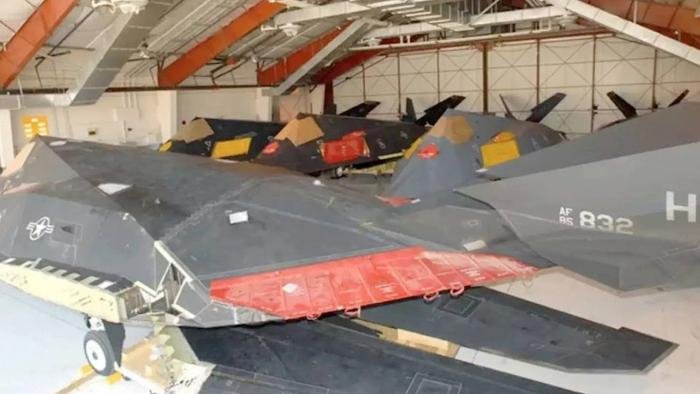
Dark Knights Rise
In more recent years the emphasis seems to have been on using the F-117As as LO (stealthy) aggressors (as well as for continuing research and development work), perhaps forming a constituted unit. In 2019, one aircraft was photographed with a new tail band bearing the name ‘Dark Knights’, and a new unit badge started to be seen on the starboard intake. This badge bore the motto ‘Licentia Ex Dominatus’ (‘freedom from tyranny’) as well as the Dark Knights name, with a diamond-shaped shield with eight stars and 13 stripes, and some kind of skeletal warrior’s head.
The Dark Knights badge has become something of a fixture, but the tailband was short-lived, giving way to a black and red checkerboard design. TR tailcodes also made a welcome return. With these markings, aircraft started to become more visible – flying more low level daylight sorties, and visiting Marine Corps Air Station Miramar and Nellis AFB during 2020.
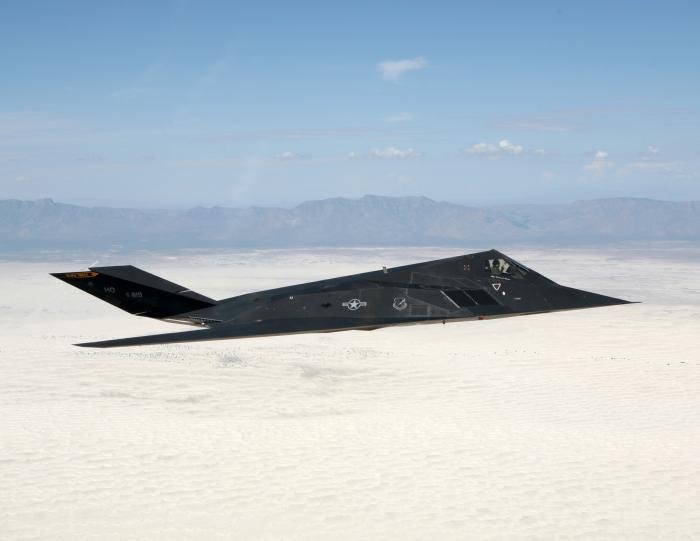
Two aircraft (‘828’ and ‘841’) participated in Exercise Red Flag 21/3 in July 2021, and then, in September 2021, two aircraft (‘811’ and ‘841’) deployed to Fresno Yosemite International Airport to train with the based Air National Guard F-15C unit, the 144th Fighter Wing flying multiple dissimilar air combat training missions. There were reports that two more aircraft (‘824’ and ‘828’) also participated, identified by radio calls. This deployment resulted in the first official acknowledgement of the type’s continued existence, including the release of still photographs and a brief video.
Three F-117As participated in Exercise Sentry Savannah in May 2022, one (‘828’) operating from the Air Dominance Center at Savannah Air National Guard Base, Georgia. The aircraft wore a ‘40 Years of Owning the Night’ logo on its tailfins, marking the 40th anniversary of the first flight of the F-117.
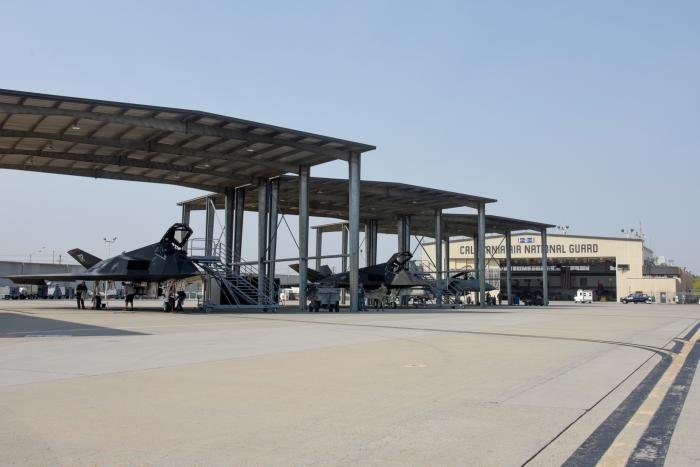
Two F-117As (‘809’ and ‘811’) participated in Exercise Northern Edge 2023 (NE23-1) in May 2023, operating out of Joint Base Elmendorf-Richardson near Anchorage, Alaska. Northern Edge incorporated assets from the UK and Australia, and test aircraft from US aerospace industry companies.
The exercise was an advanced large force employment (LFE) training event that provided an opportunity for training in joint, multinational and multi-domain operations. The Joint Pacific Range Complex (JPARC) dwarfs those in the ‘lower 48’ states and provides massive and complex range areas.



